How to Grow a lot of Food in a Small Garden – 9 EZ tips and more

This might be a good time to start growing your own food 🍓🌞
Rudbeckia hirta ~ Black Eyed Susan Plant Care Guide
Rudbeckia hirta, commonly called black-eyed Susan, is a species of flowering plant in the family Asteraceae, native to the Eastern and Central United States. It is one of a number of plants with the common name black-eyed Susan. Other common names for this plant include: brown-eyed Susan, brown Betty, gloriosa daisy, golden Jerusalem, Poorland daisy, yellow daisy, and yellow ox-eye daisy.
It is the state flower of Maryland.
The plant also is a traditional Native American medicinal herb in several tribal nations; believed in those cultures to be a remedy, among other things, for colds, flu, infection, swelling and (topically, by poultice) for snake bite (although not all parts of the plant are edible).
Parts of the plant have nutritional value. Other parts are not edible.

Botanical name: Rudbeckia hirta and other species
Plant type: Flower
USDA Hardiness Zones: 3, 4, 5, 6, 7, 8, 9
Sun exposure: Full Sun, Part Sun
Flower color: Red, Orange, Yellow
Bloom time: Summer, Fall
Black-eyed Susans (Rudbeckia hirta) are native to North America and one of the most popular wildflowers grown. They tend to blanket open fields, often surprising the passer-by with their golden-yellow beauty.
Members of the sunflower family, the “black eye” is named for the dark brown-purple centers of its daisy-like flower heads. The plants can grow to over 3 feet tall, with leaves of 6 inches, stalks over 8 inches long and flower diameter of 2 to 3 inches.
Butterflies, bees and a variety of insects are attracted to the flowers for the nectar. As they drink the nectar, they move pollen from one plant to another, causing it to grow fruits and seeds that can move about easily with the wind.
These plants bloom from June to October. Note that they can be territorial in that they tend to squash out other flowers growing near them.
Black-eyed Susans are good for cut flowers; they also work well for borders or in containers.
Planting
- Black-eyed Susans when the soil temperature has reached 70 degrees F for best seed germination. In many parts of North America, the planting period is March to May. The flower will flower June to September. Germination takes 7 to 30 days.
- Plant seeds in moist, well-drained soil.
- These hearty flowers really enjoy the Sun. They prefer full sun, though they’ll grow in partial sun.
- Sow by seed in loosely covered soil.
- It’s best if soil is fertile (not poor) though they can tolerate tough conditions.
- Black-eyed Susans generally grow between 1 and 3 feet tall (though they can grow taller) and can spread between 12 to 18 inches, so plant seeds closer to prevent lots of spreading or plant further apart to make a nice border.
Care
- Check your plants regularly to see if they need watering. Make sure they don’t dry out.
- Divide perennial types every 3 to 4 years to ensure healthy plants and to prevent excessive spreading.
- Be sure to remove faded/dead flowers to prolong blooming.
- You can cut back black-eyed Susans after they flower and a second, smaller bloom may occur in late fall.
Pests
- These plants are susceptible to powdery mildew fungi, so begin an organic antifungal program if the lower leaves turn brown and twisted.
- Slugs and snails
- Aphids
- Powdery mildew
- Rust
- Smut
- Leaf spots
Harvest/Storage
After the first season, black-eyed susans can reseed themselves!
Recommended Varieties
- Becky Mixed, which offers a variety of colors for your garden, such as lemon-yellow, golden-yellow, dark red, and reddish-brown.
- Sonora, which has bright yellow flowers.
- Toto, which is a dwarf type and ideal for containers.
Special Features
- Attracts Butterflies

Rudbeckia hirta
Rudbeckia hirta L.
Black-eyed Susan, Common black-eyed Susan, Brown-eyed Susan
Asteraceae (Aster Family)
Synonym(s):
USDA Symbol: RUHI2
USDA Native Status: L48 (N), AK (I), CAN (N)
This cheerful, widespread wildflower is considered an annual to a short-lived perennial across its range. Bright-yellow, 2-3 in. wide, daisy-like flowers with dark centers are its claim-to-fame. They occur singly atop 1-2 ft. stems. The stems and scattered, oval leaves are covered with bristly hairs. Coarse, rough-stemmed plant with daisy-like flower heads made up of showy golden-yellow ray flowers, with disk flowers forming a brown central cone.
This native prairie biennial forms a rosette of leaves the first year, followed by flowers the second year. It is covered with hairs that give it a slightly rough texture. The Green-headed Coneflower (R. laciniata) has yellow ray flowers pointing downward, a greenish-yellow disk, and irregularly divided leaves.
More …
Care of a Black Eyed Susan Plant
Fairy Spuds :) Claytonia virginica ~ Edible Spring Wildflowers

“Claytonia virginica 2 Radnor Lake” by Kaldari – Own work. Licensed under Public Domain via Wikimedia Commons
Claytonia virginica (L.), the Eastern spring beauty, Virginia spring beauty, or fairy spud, is an herbaceous perennial in the family Portulacaceae. Its native range is Eastern North America. Its scientific name honors Colonial Virginia botanist John Clayton (1694–1773).
Spring beauty is found in the Eastern temperate deciduous forest of North America. It is noted for its abundance throughout many parts of its range, especially in forests. The plant can be found throughout many different habitat types including lawns, city parks, forests, roadsides, wetlands, bluffs, and ravines.
This plant has been used medicinally by the Iroquois, who would give a cold infusion or decoction of the powdered roots to children suffering from convulsions. They would also eat the raw roots, believing that they permanently prevented conception. They would also eat the roots as food,[13] as would the Algonquin people, who cooked them like potatoes. Spring beauty corms along with the entire above ground portion of the plant are safe for human consumption.
Our most widely distributed early spring flower. Flower stalks bear several flowers branching from the main stem; flowers with 2 sepals that fall off as the flower opens; 5 petals, white (sometimes pink) with distinct pink veining; 5 pink stamens. Blooms February–May. Leaves 1 or 2 basal and 1 opposite pair on stems, narrow, lanceolate, tapering to a sessile base, dark green, sometimes purplish, fleshy. Root a rounded corm.

“Claytonia virginica, Fox Chapel, 2015-04-18, 01” by Cbaile19 – Own work. Licensed under CC0 via Wikimedia Commons
Size:
Height: about 5 inches during flowering; about twice that tall later.
Habitat and conservation:
Found, often in abundance, in open woods, fields, valleys, suburban lawns, and sometimes rocky ledges. This species is also called the Virginia spring beauty, picking up on the scientific name, as well as “fairy spud,” for the edible corms, which resemble tiny potatoes.
Distribution in Missouri:
Statewide.
Human connections:
This well-named plant provides a bounty of beauty in the woods as well as in open areas and yards. The potato-like corms (“fairy spuds”) and the leaves are edible, and naturally Native Americans knew this well before today’s wild-foods enthusiasts.
Ecosystem connections:
This and other tender plants that emerge in early spring provide a welcome dietary boost for many animals, from insects to birds to mammals. Other plants in the purslane family include the garden favorite “moss rose,” and the bitterroot flower of the Rocky Mountains.
Fairy Spud Cultivation
Cultivation: The preference is dappled sunlight during the spring, moist to slightly dry conditions, and a rich loamy soil with abundant organic matter. This wildflower will adapt to semi-shaded areas of lawns if mowing is delayed during the spring. Both the flowers and foliage fade away by mid-summer. The easy way to start plants is by obtaining their corms, although these are expensive to buy from nurseries.
Range & Habitat: The native Spring Beauty is a common wildflower that occurs in every county of Illinois (see Distribution Map). Habitats include moist to dry deciduous woodlands, savannas, thinly wooded bluffs, city parks, old cemeteries, and lawns (particularly near trees). Less often, this species is found in mesic prairies, but it is primarily a woodland plant. Spring Beauty can survive more environmental degradation than most spring-blooming woodland species, including occasional grazing by cattle and partial clearing of trees. This is one reason why it is still common.

“Flickr – Nicholas T – Pink Striae” by Nicholas A. Tonelli from Pennsylvania, USA – Pink Striae. Licensed under CC BY 2.0 via Wikimedia Commons
The Spring Beauty, also Springbeauty, is a longtime standard for foragers. They are abundant in some areas, rare in others. Thus forage with some local consideration. True to its name the attractive wild flower is a sign of spring and easy to recognize from other spring blossoms. The white to pink petals have pink stripes, sometimes pale, sometimes bright, but pink stripes nonetheless. Each blossom also only has two sepals (leaves right under the blossom.) Lower leaves are strap-like varying in size and width. The plant grows small roots that remind people of tiny potatoes, hence the nickname “Fairy Spuds.” At least one botanist said you can eat them “but their small size makes this rather impractical.” Famous forager Euell Gibbons clearly would disagree.
Perhaps no other wildflower announces the new season as fervently as the spring beauty … here
Brunnera ~ Siberian bugloss Plant Care Guide
Brunnera macrophylla (Siberian bugloss, great forget-me-not, heartleaf) is a species of flowering plant in the family Boraginaceae, native to the Caucasus. It is a hardy, rhizomatous, herbaceous perennial, that can reach from 12 to 18 inches (30 to 45 cm) in height, and carries basal, simple cordate leaves on slender stems. Sprays of small blue flowers, similar to those seen in the related forget-me-nots, are borne from mid-Spring, and bloom for eight to ten weeks.
The plant is valued as groundcover in shady areas, and has clumps of large heart-shaped leaves of about six inches (15 cm); these usually have white or cream markings, and are present all season. Plants are happy in any shady area that stays relatively moist. It often self-seeds, appearing around the garden in other places. Clumps may be easily divided in early fall.
The Latin specific epithet macrophylla means “larger-leaved”.
This plant and the variegated cultivars ‘Hadspen Cream’ and ‘Jack Frost’ have gained the Royal Horticultural Society’s Award of Garden Merit.
Herbaceous Perennial Flower
Also known as Siberian Bugloss , False Forget Me Not
Brunnera macrophylla
Boraginaceae Family
Synonym: Anchusa myosotidiflora
Perfect for moist woodland settings, dainty intensely blue flowers rise above heart shaped, dark green leaves on this spring-blooming perennial.

A superb introduction, forming a clump of heart-shaped silver leaves, delicately veined with mint green. Sprays of bright blue Forget-me-not flowers appear in mid to late spring. This is a choice collector’s plant, but an easy-to-grow perennial that performs well in all but the driest of shady conditions. Excellent for the woodland garden. ‘Jack Frost’ handles more direct sun that most other variegated types of Brunnera, though in hot-summer regions some afternoon shade is recommended to prevent leaf scorch. Selected as the 2012 Perennial Plant of the Year by the Perennial Plant Association.
Brunnera Plants: How To Plant Brunnera Siberian Bugloss
By Becca Badgett
Blooming, growing brunnera is one of the prettiest plants to include in the shady garden. Commonly called false forget-me-not, petite blooms compliment attractive, glossy foliage. Brunnera Siberian bugloss is also called heartleaf brunnera because of the shape of its leaves. It is an herbaceous perennial, dying back in winter.
About Brunnera Plants
The light blue blooms of brunnera plants rise above the leaves of various cultivars. Brunnera plants have leaves that are glossy green or in variegated hues of gray, silver or white, such as the popular cultivar ‘Jack Frost.’ Brunnera Siberian bugloss blooms in early to mid spring.
When growing brunnera, locate the plant in part to full shade, in well-drained soil that can be kept consistently and lightly moist. Brunnera plants don’t do well in soil that dries out, neither will they flourish in soggy soil.
Milkweed ~ Growing milkweed for monarchs ~ Endangered Monarch Butterflies
Asclepias L. (1753), the milkweeds, is a genus of herbaceous perennial, dicotyledonous plants that contains over 140 known species. It previously belonged to the family Asclepiadaceae, but this is now classified as the subfamily Asclepiadoideae of the dogbane family Apocynaceae.
Milkweed is named for its milky sap, which consists of a latex containing alkaloids and several other complex compounds including cardenolides. Some species are known to be toxic.
Carl Linnaeus named the genus after Asclepius, the Greek god of healing, because of the many folk-medicinal uses for the milkweed plants.
Pollination in this genus is accomplished in an unusual manner. Pollen is grouped into complex structures called pollinia (or “pollen sacs”), rather than being individual grains or tetrads, as is typical for most plants. The feet or mouthparts of flower-visiting insects such as bees, wasps and butterflies, slip into one of the five slits in each flower formed by adjacent anthers. The bases of the pollinia then mechanically attach to the insect, pulling a pair of pollen sacs free when the pollinator flies off, assuming the insect is large enough to produce the necessary pulling force (if not, the insect may become trapped and die. Pollination is effected by the reverse procedure in which one of the pollinia becomes trapped within the anther slit.
Asclepias species produce their seeds in follicles. The seeds, which are arranged in overlapping rows, bear a cluster white, silky, filament-like hairs known as the coma[4] (often referred to by other names such as pappus, “floss”, “plume”, or “silk”). The follicles ripen and split open, and the seeds, each carried by its coma, are blown by the wind.
They have many different flower colorations, depending on species.
http://en.wikipedia.org/wiki/Asclepias
Help Monarchs with the Right Milkweeds
Milkweeds Native to your Region
The most important thing you can do is to plant the milkweeds that are the most common in your own region, and here is a way to find out what those are. The following link is from the Monarchwatch.org site, where you will find each state listed with all the milkweeds that grow there named.
http://nativeplantwildlifegarden.com/help-monarchs-with-the-right-milkweeds/
Milkweed Seed Finder
Native milkweeds (Asclepias spp.) are essential for monarch butterfly (Danaus plexippus) caterpillars and support a diversity of pollinators with their abundant nectar. By including milkweeds in gardens, landscaping, wildlife habitat restoration projects, and native revegetation efforts you can provide breeding habitat for monarchs and a valuable nectar source for butterflies, bees, and other beneficial insects. As part of our Project Milkweed, we have created this comprehensive national directory of milkweed seed vendors to help you find sources of seed. To learn more about monarch butterflies and how you can participate in conservation efforts, please visit the Xerces Society’s Monarch Butterfly and Western Monarch Conservation Campaign pages or the Monarch Joint Venture webpage.
Please use the drop-down menus below to search for seed sources by species and/or state. Below the search function, you can read more about finding and selecting the milkweed seed that is right for your area.
Before using the Seed Finder, please note that:
- Milkweed seed is currently unavailable in several areas of the country. If you do not receive any results when you search by state, we have not learned of any milkweed vendors located there. Please search other states in your region for vendors who may carry local ecotype seed that is appropriate for planting in your area.
- A seed vendor’s physical address does not always reflect the origin of the seed that they carry. Please always ask vendors for information about seed origin and whenever possible, try to plant seed that is as locally sourced as possible.
- Some of the vendors listed are wholesale only and require a minimum order amount.
- In most parts of the country, it is best to plant milkweed seed in the fall; however spring planting is possible in some areas. Please ask your regional seed vendor for planting recommendations.
Search For Native Milkweed Seed~
http://www.xerces.org/milkweed-seed-finder/
GROWING MILKWEEDS
Introduction
Milkweeds can be propagated from seeds, cuttings, and, in some cases, from root divisions. This account will deal with storage, treatment and planting of milkweeds seeds and will briefly touch on propagation from cuttings.
Milkweed seeds can be planted in prepared beds outdoors or started indoors in flats. We recommend the latter approach since germination rates are generally higher indoors and it is easier to establish your milkweeds with transplanted seedlings that are well-rooted and therefore more resistant to weather extremes and pests.
http://www.ourhabitatgarden.org/creatures/milkweed-growing.html
Germinating, Growing and Transplanting
Milkweed seedlings can be started indoors in a greenhouse or under artificial lighting and then transplanted outdoors after the average date of last frost. If seeds are started indoors, allow 4-8 weeks growing time before transplanting. Plastic flats can be used to start the seeds. Fill the flats with a soil mix suitable for seedlings (most potting mixes are), thoroughly soak the soil, and let the excess water drain. Sow the seeds by scattering them on the soil surface 1/4-1/2 inch apart, and then cover with about 1/4 inch of additional soil mix. Gently mist the soil surface with water to dampen the additional soil mix that has been added. In an effort to improve germination rates, many gardeners place the seeds in packets made from paper towels and soak them in warm water for 24 hours prior to planting. This method seems to work especially well for seeds of species that require vernalization (see below).
Read in Full Here :
http://www.monarchwatch.org/milkweed/prop.htm
Common Milkweed ~ Asclepias syriaca
Milkweed family (Asclepiadaceae)
Cultivation: The preference is full sun, rich loamy soil, and mesic conditions, but this robust plant can tolerate a variety of situations, including partial sun and a high clay or sand content in the soil. Under ideal conditions, Common Milkweed can become 6′ tall and spread aggressively, but it is more typically about 3-4′ tall. This plant is very easy to grow once it becomes established.
Range & Habitat: Habitats include moist to dry black soil prairies, sand prairies, sand dunes along lake shores, thickets, woodland borders, fields and pastures, abandoned fields, vacant lots, fence rows, and areas along railroads and roadsides. This plant is a colonizer of disturbed areas in both natural and developed habitats.
http://www.illinoiswildflowers.info/weeds/plants/cm_milkweed.htm
Deadline March 2: Ask the Fish & Wildlife Service to Put the Monarch Butterfly on the Endangered Species List – See more at:
http://salsa3.salsalabs.com/o/50865/p/dia/action3/common/public/?action_KEY=15690
Flight of the Butterflies 3D
The monarch butterfly is a true marvel of nature. Weighing less than a penny, it makes one of the longest migrations on Earth across a continent to a place it has never known. Follow the monarchs’ perilous journey and experience millions of them in the remote mountain peaks of Mexico, with breathtaking cinematography from an award winning team including Oscar® winner Peter Parks. Be captivated by the true and compelling story of an intrepid scientist’s 40-year search to find their secret hideaway. Unravel the mysteries and experience the Flight of the Butterflies.
http://www.si.edu/Imax/movie/71
Indoor Gardens for Small Apartments | Suspended and Container Gardening

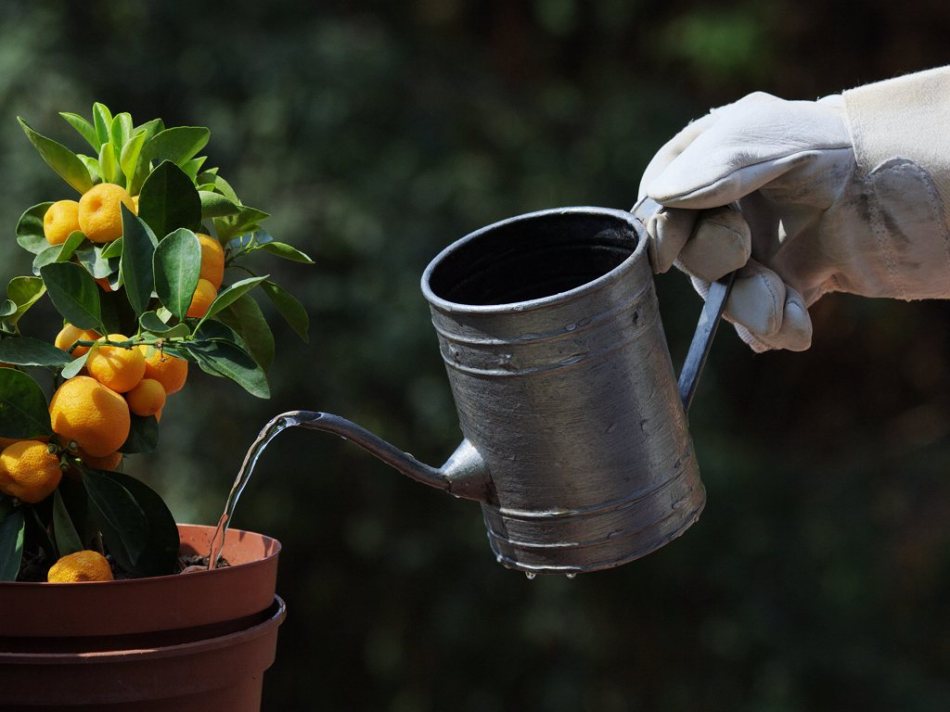
Every house should have a garden but unfortunately for many a garden is only a dream. Container gardening is a perfect solution for those who do not have much space in their home, but would like to grow their own vegetables or flowers.
Asters Plant Care Guide ~ Varieties
The genus Aster once contained nearly 600 species in Eurasia and North America, but after morphologic and molecular research on the genus during the 1990s, it was decided that the North American species are better treated in a series of other related genera. After this split there are roughly 180 species within the genus, all but one being confined to Eurasia.[3] The name Aster comes from the Ancient Greek word ἀστήρ (astér), meaning “star”, referring to the shape of the flower head. Many species and a variety of hybrids and varieties are popular as garden plants because of their attractive and colourful flowers. Aster species are used as food plants by the larvae of a number of Lepidoptera species—see list of Lepidoptera that feed on Aster. Asters can grow in all hardiness zones.
The genus Aster is now generally restricted to the Old World species, with Aster amellus being the type species of the genus, as well as of the family Asteraceae.[1] The New World species have now been reclassified in the genera Almutaster, Canadanthus, Doellingeria, Eucephalus,Eurybia, Ionactis, Oligoneuron, Oreostemma, Sericocarpus and Symphyotrichum, though all are treated within the tribe Astereae. Regardless of the taxonomic change, all are still widely referred to as “asters” (popularly “Michaelmas daisies” because of their typical blooming period) in the horticultural trades. See the List of Aster synonyms for more information.
Some common North American species that have now been moved are:
- Aster breweri (now Eucephalus breweri), Brewer’s aster
- Aster cordifolius (now Symphyotrichum cordifolium), blue wood aster
- Aster dumosus (now Symphyotrichum dumosum), New York aster
- Aster divaricatus (now Eurybia divaricata), white wood aster
- Aster ericoides (now Symphyotrichum ericoides), heath aster
- Aster laevis (now Symphyotrichum laeve), smooth aster
- Aster lateriflorus (now Symphyotrichum lateriflorum), “Lady in Black”, calico aster
- Aster novae-angliae (now Symphyotrichum novae-angliae), New England aster
- Aster novi-belgii (now Symphyotrichum novi-belgii), New York aster
- Aster peirsonii (now Oreostemma peirsonii), Peirson’s aster
- Aster protoflorian (now Symphyotrichum pilosum), frost aster
- Aster scopulorum (now Ionactis alpina), lava aster
- Aster sibiricus (now Eurybia sibirica), Siberian aster
The “China aster” is in the related genus Callistephus.
Species
Aster alpinus is the only species ofAster (sensu stricto) that grows natively in North America; it is found in mountains across the Northern Hemisphere.
In the United Kingdom, there are only two native members of the genus: goldilocks, which is very rare, and Aster tripolium, the sea aster. Aster alpinus spp. vierhapperi is the only species native to North America.[2]
Some common species are:
- Aster alpinus, Alpine aster
- Aster amellus, European Michaelmas daisy or Italian aster
- Aster linosyris, goldilocks aster
- Aster scaber
- Aster tataricus, Tatarian aster
- Aster tongolensis
- Aster tripolium, sea aster
http://en.wikipedia.org/wiki/Aster_(genus)
**********************************
Asters are daisy-like perennials with starry-shaped flower heads. They bring delightful color to the garden in late summer and autumn when many of your other summer blooms may be fading.
The plant’s height ranges from 8 inches to 8 feet, depending on the type. You can find an aster for almost any garden and they have many uses, such as in borders, rock gardens, or wildflower gardens. Asters also attract butterflies to your garden!
http://www.almanac.com/plant/aster
*************************
Aster’s brilliant flowers brighten the fall garden when little else is blooming. Indeed, “aster,” the Latin word for “star,” aptly describes the starry flower heads. Another common name is Michaelmas daisy.
About This Plant
Aster thrives in areas with cool, moist summers. It produces blue, white, or pink flowers in the late summer or fall. Plant height ranges from 8 inches to 8 feet, depending on variety. Tall varieties make good back-of-the-border plants and are also attractive planted in naturalized meadows. Aster is susceptible to powdery mildew and rust diseases, so choose disease-resistant varieties.
Special Features
Attracts butterflies.
Site Selection
Select a site with full sun to light shade and well-drained soil.
Planting Instructions
Plant in spring, spacing plants 1 to 3 feet apart, depending on the variety. Prepare garden bed by using a garden fork or tiller to loosen the soil to a depth of 12 to 15 inches, then mix in a 2- to 4-inch layer of compost. Dig a hole twice the diameter of the pot the plant is in. Carefully remove the plant from its container and place it in the hole so the top of the root ball is level with the soil surface. Carefully fill in around the root ball and firm the soil gently. Water thoroughly.
Care
Apply a thin layer of compost each spring, followed by a 2-inch layer of mulch to retain moisture and control weeds. Pinch young shoots back to encourage bushiness. Water plants during the summer if rainfall is less than 1 inch per week. Stake tall varieties to keep them upright. After the first killing frost, cut stems back to an inch or two above soil line. Divide plants every three to four years as new growth begins in the spring, lifting plants and dividing them into clumps containing three to five shoots.
http://www.garden.org/plantguide/?q=show&id=2031
**********************
How to Grow and Care for Aster Flowers

Perennial
Growing Asters is easy. Perennial Aster flowers grow well in average soils, but needs full sun. Aster flowers come in blues, purples and a variety of pinks. All Asters are yellow in the center of the flower. They are daisy-like in appearance, even though they are a member of the sunflower family.
Did you know? The yellow center of Asters is actually comprised of many tiny flowerets.
Asters come in a wide variety, with some less than a foot tall, while others are two feet tall or more. Both large and smaller varieties make good cut flowers for vases and arrangements.
Plant Height: up to 24 inches
Flowers Bloom: Summer/Fall
*******************************
All About Asters
From tall to small, splashy to subdued, these perennials are proven performers.
by Leonard Perry
from Fine Gardening issue 135
http://www.finegardening.com/all-about-asters
***********************************

Sisyrinchium ~ Blue-eyed Grasses Plant Care Guide ~ Varieties
Sisyrinchium (Blue-eyed Grasses) is a genus of 70-200 species of annual to perennial plants of the iris family, native to the New World.
Several species in the eastern United States are threatened or endangered.
http://en.wikipedia.org/wiki/Sisyrinchium
http://commons.wikimedia.org/wiki/Category:Sisyrinchium
Common Name: blue-eyed grass
Type: Herbaceous perennial
Family: Iridaceae
Native Range: Southeastern United States
Zone: 4 to 9
Height: 1.50 to 2.00 feet
Spread: 0.50 to 1.00 feet
Bloom Time: May to June
Bloom Description: Blue
Sun: Full sun
Water: Medium
Maintenance: Medium
Suggested Use: Ground Cover, Naturalize
Flower: Showy, Good Cut
Garden locations
Culture
Best grown in medium moisture, well-drained soil in full sun. Tolerates light shade. Prefers consistently moist soils that do not dry out, but drainage must be good. Will freely self-seed in optimum growing conditions. Plantings may be sheared back after bloom to avoid any unwanted self-seeding and/or to tidy foliage for remaining part of the growing season. Plants may need to be divided every 2-3 years to keep plantings vigorous.
Noteworthy Characteristics
Though their foliage is grass-like, the blue-eyed grasses belong to the iris family not the grass family. Sisyrinchium angustifolium is noted for its violet-blue flowers and branched flowering stems. It is native to Missouri where it occurs in damp open woods, slopes and along stream banks throughout much of the State. It is a clump-forming perennial that features a tuft of narrow grass-like leaves (to 3/16″ wide) typically growing to 12″ (less frequently to 20″) tall. Clusters of violet-blue flowers (to 1/2″ across), each with 6 pointed tepals and a yellow eye, appear in spring on stalks growing from leaf-like bracts atop usually branched flowering stems which are distinctively flattened. Sisyrinchium campestre, also a Missouri native, features pale blue to white flowers atop unbranched flowering stems. S. angustifolium includes plants formerly classified as S. bermudianum.
Problems
No serious insect or disease problems.
Garden Uses
Best naturalized in informal garden areas such as cottage gardens, woodland gardens, wild gardens or native plant areas. Also effective in border fronts and rock gardens. Also effective as an edger for paths or walkways.
http://www.missouribotanicalgarden.org/PlantFinder/PlantFinderDetails.aspx?kempercode=i870
Blue-Eyed Grass can be a shy, retiring plant at times. They are small perennials, only 10-30 cm (4-12″) tall, with leaves to 3 mm (1/8″) wide. They start opening their eyes in early June and continue to look around all through June. But you have to be a morning person. Sometimes I have gone to photograph those pretty blue eyes in the afternoon only to find that they have already closed their eyes for the day. And just try to find them when their eyes are closed! Their medium green grass-like leaves fade into the background and mingle shyly with all the prairie grasses around them.
Each pretty blue eye sheds a tear when it is finished blooming, in the form of a small round seed capsule filled with tiny black seeds. Perhaps they are tears of happiness or perhaps they are tears of sorrow. We can only speculate. This plant is also known as Star Grass by some people because the flowers are distinctly star shaped. Blue-Eyed Grass is actually not a true grass, but a member of the Iris family, closely related to Blue Flag or Wild Iris (Iris versicolor).
Native Habitat
Blue-Eyed Grass is a native perennial that grows across the prairies and parklands in open meadows. I have seen it growing in a field in northwest Winnipeg along with Prairie Crocus and Three Flowered Avens. John Morgan (Prairie Habitats – see Gardening with Native Prairie Plants) also reported seeing a hillside covered with blooming plants in the Carberry Hills of Manitoba.
http://www.naturenorth.com/spring/flora/begrass/Fbegrass.html
Narrowleaf blue-eyed grass, Narrow-leaf blue-eyed-grass, Bermuda blue-eyed grass, Blue-eyed grass
Iridaceae (Iris Family)
Synonym(s): Sisyrinchium bermudiana, Sisyrinchium graminoides
USDA Symbol: SIAN3
USDA Native Status: L48 (N), CAN (N)
The numerous, narrow, light-green leaves of this perennial form dense, tufted clumps which steadily grow with new foliage during the season. The flattened, leaf-like flowering stems may be up to 18 in. long and bear light-blue, star-shaped flowers a few inches above the leaves. Height is 1-1 1/2 ft. Several delicate, blue or deep blue-violet flowers with yellow centers in 2 broad bracts top a flat stem, generally only 1 flower at a time in bloom; stems taller than the clusters of narrow, sword-shaped leaves near base.
Although the plant is small and has grass-like leaves, the flowers have all the features of the Iris family. The various species are all much alike and separation is based on such characteristics as branching pattern and leaf length. Common Blue-eyed Grass (S. montanum) is also a widespread species, with slightly wider leaves, over 1/4 (6 mm), and unbranched stalks.
PLANT CHARACTERISTICS
Duration: Perennial
Habit: Herb
Size Notes: 1-1.5 feet.
Leaf: Green
Fruit: Brown
Size Class: 1-3 ft.
BLOOM INFORMATION
Bloom Color: Blue
Bloom Time: Mar , Apr , May , Jun , Jul
Native Habitat: Meadows; damp fields; low, open woods
GROWING CONDITIONS
Water Use: Medium
Light Requirement: Sun , Part Shade
Soil Moisture: Moist , Wet
CaCO3 Tolerance: Low
Soil Description: Moist, poor to average soils
Conditions Comments: This short-lived perennial will decline if allowed to dry out. Heavy mulch causes crown rot and rich, organic soils encourage rank, vegetative growth. Plants need to be divided at least every other year.
BENEFIT
Use Medicinal: Amerindians used root tea for diarrhea (in children); plant tea for worms, stomachaches. Several species used as laxatives. (Foster & Duke)
Conspicuous Flowers: yes
Deer Resistant: No
PROPAGATION
Propagation Material: Seeds
Description: Propagate by seed or division. Several dozen divisions can be expected from a mature, healthy specimen.
Seed Collection: Collect seed capsule when they have darkened to brown and become wrinkled.
Commercially Avail: yes
FIND SEED OR PLANTS
Find seed sources for this species at the Native Seed Network.
http://www.wildflower.org/plants/result.php?id_plant=SIAN3
How to Plant & Germinate Eggplant : Garden Seed Starting

Eggplant (Solanum melongena) is a species of nightshade commonly known in British English as aubergine and also known as melongene, garden egg, or guinea squash. It is known in South Asia, Southeast Asia and South Africa as brinjal. It bears a fruit of the same name (commonly either “eggplant” in American and Australian English or “aubergine” in British English) that is widely used in cooking, most notably as an important ingredient in dishes such as moussaka and ratatouille. As a member of the genus Solanum, it is related to both the tomato and the potato. It was originally domesticated in India and Bangladesh from the wild nightshade, the thorn or bitter apple, S. incanum.
http://en.wikipedia.org/wiki/Eggplant
~~~~~~~~~~~~~~~~~~
Botanical name: Solanum melongena
Plant type: Vegetable
USDA Hardiness Zones: 4, 5, 6, 7, 8, 9, 10
Sun exposure: Full Sun
Soil type: Sandy
Soil pH: Slightly Acidic to Neutral
Eggplants are short-lived perennial vegetables, but are usually cultivated as annuals. Also known as aubergines, eggplants differ mainly in size, shape and color of the fruits. Eggplants are tropical and subtropical, requiring relatively high temperatures. Related crop include tomatoes, potatoes and peppers.
Planting
- Start plants indoors 2 months before the soil warms up or buy nursery transplants just before planting.
- Place 3 to 4 inch tall seedlings 24 to 30 inches apart in well-prepared beds.
- Pinch out the terminal growing points for a bushier plant.
Care
- Stake plants over 24 inches tall.
- Water well and apply a balanced fertilizer every two weeks during the growing season.
- For bigger fruits, restrict to five or six per plant.
Pests
- Aphids
- Spider Mites
- Tomato Hornworms
- Downy and Powdery Mildew
- Eggplant fruit may not ripen properly due to cold temperatures, pest damage, or infertile soils.
Harvest/Storage
- Harvest 16 to 24 weeks after sowing when the skin of the fruit is shiny and unwrinkled.
- Cut the fruit close to the stem, but leaving about an inch of it attached.
- Eggplants can be stored for up to two weeks in humid conditions no lower than 50 degrees F.
Recommended Varieties
- ‘Black Beauty’
- ‘Easter Egg’
- ‘Little Fingers’
Recipes
Wit & Wisdom
At one time, women in the Orient used a black dye to stain their teeth a gun metal gray. The dye probably came from the same dark purple eggplant we see in the marketplace today.
http://www.almanac.com/plant/eggplant
See Also
Eggplants in containers
Genetically-modified eggplant found to be unsafe for human consumption, Environment
Genetically-modified eggplant found to be unsafe for human consumption, Environment
GMO Agriculture and Chemical Pesticides are Killing the Bees
The US Environmental Protection Agency (EPA) has failed to protect bees from neonicotinoid pesticides, according to a lawsuit against the agency, filed by beekeepers and environmental groups. Said Paul Towers, spokesperson for the Pesticide Action Network (PAN), one of the groups involved in the lawsuit:
“Despite our best efforts to warn the agency about the problems posed by neonicotinoids, the EPA continued to ignore the clear warning signs of an ag system in trouble.”
Lawsuit Maintains the Link Between Neonicotinoids and Bee Die Off Is ‘Crystal Clear’
Neonicotinoid pesticides are a newer class of chemicals that are applied to seeds before planting. This allows the pesticide to be taken up through the plant’s vascular system as it grows, where it is expressed in the pollen and nectar.
These insecticides are highly toxic to bees because they are systemic, water soluble, and pervasive. They get into the soil and groundwater where they can accumulate and remain for many years and present long-term toxicity to the hive as well as to other species, such as songbirds.
Neonicotinoids affect insects’ central nervous systems in ways that are cumulative and irreversible. Even minute amounts can have profound effects over time.
The disappearance of bee colonies began accelerating in the United States shortly after the EPA allowed these new insecticides on the market in the mid-2000s. The lawsuit alleges that the EPA allowed the neonicotinoids to remain on the market despite clear warning signs of a problem.
It also alleges the EPA acted outside of the law by allowing conditional registration of the pesticides, a measure that allows a product to enter the market despite the absence of certain data.
European Food Safety Authority Ruled Neonicotinoids ‘Unacceptable’
The EPA’s continued allowance of neonicotinoids becomes all the more irresponsible in light of recent findings by other government organizations. Earlier this year, for instance, the European Food Safety Authority (EFSA) released a report that ruled neonicotinoid insecticides are essentially “unacceptable” for many crops.1 The European Commission asked EFSA to assess the risks associated with the use of three common neonicotinoids – clothianidin, imidacloprid and thiamethoxam – with particular focus on:
- Their acute and chronic effects on bee colony survival and development
- Their effects on bee larvae and bee behavior
- The risks posed by sub-lethal doses of the three chemicals
One of the glaring issues that EFSA came across was a widespread lack of information, with scientists noting that in some cases gaps in data made it impossible to conduct an accurate risk assessment. Still, what they did find was “a number of risks posed to bees” by the three neonicotinoid insecticides. The Authority found that when it comes to neonicotinoid exposure from residues in nectar and pollen in the flowers of treated plants:2
“…only uses on crops not attractive to honeybees were considered acceptable.”
As for exposure from dust produced during the sowing of treated seeds, the Authority ruled “a risk to honeybees was indicated or could not be excluded…” Unfortunately, neonicotinoids have become the fastest growing insecticides in the world. In the US, virtually all genetically engineered Bt corn crops are treated with neonicotinoids.
Serious Risks to Bees Already Established
One of the observed effects of these insecticides is weakening of the bee’s immune system. Forager bees bring pesticide-laden pollen back to the hive, where it’s consumed by all of the bees.
Six months later, their immune systems fail, and they fall prey to secondary, seemingly “natural” bee infections, such as parasites, mites, viruses, fungi and bacteria. Pathogens such as Varroa mites, Nosema, fungal and bacterial infections, and Israeli Acute Paralysis Virus (IAPV) are found in large amounts in honeybee hives on the verge of collapse.
Serious honeybee die-offs have been occurring around the world for the past decade but no one knows exactly why the bees are disappearing.
The phenomenon, dubbed Colony Collapse Disorder (CCD), is thought to be caused by a variety of imbalances in the environment, although agricultural practices such as the use of neonicotinoid pesticides are receiving growing attention as more research comes in. As written in the journal Nature:3
“Social bee colonies depend on the collective performance of many individual workers. Thus, although field-level pesticide concentrations can have subtle or sublethal effects at the individual level, it is not known whether bee societies can buffer such effects or whether it results in a severe cumulative effect at the colony level. Furthermore, widespread agricultural intensification means that bees are exposed to numerous pesticides when foraging, yet the possible combinatorial effects of pesticide exposure have rarely been investigated.”
This is what the Nature study set out to determine, and it was revealed that bees given access to neonicotinoid and pyrethroid pesticides were adversely affected in numerous ways, including:
- Fewer adult worker bees emerged from larvae
- A higher proportion of foragers failed to return to the nest
- A higher death rate among worker bees
- An increased likelihood of colony failure
The researchers said:
“Here we show that chronic exposure of bumble bees to two pesticides (neonicotinoid and pyrethroid) at concentrations that could approximate field-level exposure impairs natural foraging behavior and increases worker mortality leading to significant reductions in brood development and colony success.
We found that worker foraging performance, particularly pollen collecting efficiency, was significantly reduced with observed knock-on effects for forager recruitment, worker losses and overall worker productivity. Moreover, we provide evidence that combinatorial exposure to pesticides increases the propensity of colonies to fail.”
Why the Food Supply Could Be Dependent on Urgent Action by the EPA
The EPA acknowledges that “pesticide poisoning” may be one factor leading to colony collapse disorder,4 yet they have been slow to act to protect bees from this threat. The current lawsuit may help spur them toward more urgent action, which is desperately needed as the food supply hangs in the balance.
There are about 100 crop species that provide 90 percent of food globally. Of these, 71 are pollinated by bees.5 In the US alone, a full one-third of the food supply depends on pollination from bees. Apple orchards, for instance, require one colony of bees per acre to be adequately pollinated. So if bee colonies continue to be devastated, major food shortages could result.
There is also concern that the pesticides could be impacting other pollinators as well, including bumblebees, hoverflies, butterflies, moths and others, which could further impact the environment.
Four Steps to Help Protect the Bees
If you would like to learn more about the economic, political and ecological implications of the worldwide disappearance of the honeybee, check out the documentary film Vanishing of the Bees. If you’d like to get involved, here are four actions you can take to help preserve and protect our honeybees:
- Support organic farmers and shop at local farmer’s markets as often as possible. You can “vote with your fork” three times a day. (When you buy organic, you are making a statement by saying “no” to GMOs and toxic pesticides!)
- Cut the use of toxic chemicals in your house and on your lawn, and use only organic, all-natural forms of pest control.
- Better yet, get rid of your lawn altogether and plant a garden or other natural habitat. Lawns offer very little benefit for the environment. Both flower and vegetable gardens provide excellent natural honeybee habitats.
- Become an amateur beekeeper. Having a hive in your garden requires only about an hour of your time per week, benefits your local ecosystem, and you can enjoy your own honey!
Bell Peppers Plant Care Guide ~ Seeds to garden ~ How to
Botanical name: Capsicum annuum
Plant type: Vegetable
USDA Hardiness Zones: 1, 2, 3, 4, 5, 6, 7, 8, 9, 10, 11
Sun exposure: Full Sun
Soil type: Loamy
Soil pH: Neutral
Peppers are a tender, warm-season crop. They resist most pests and offer something for everyone: spicy, sweet or hot, and a variety of colors, shapes and sizes. For this page, we will focus on sweet bell peppers.
Planting
- Start seeds indoors 8-10 weeks before last spring frost date.
- The temperature must be at least 70 degrees F for seed germination, so keep them in a warm area for the best and fastest results.
- Start pepper seeds three to a pot, and thin out the weakest seedling. Let the remaining two pepper plants spend their entire lives together as one plant. The leaves of two plants help protect peppers against sunscald, and the yield is often twice as good as two segregated plants.
- Begin to harden off plants about 10 days before transplanting.
- A week before transplanting, introduce fertilizer or aged compost in your garden soil.
- After the danger of frost has passed, transplant seedlings outdoors, 18 to 24 inches apart (but keep paired plants close to touching.)
- Soil should be at least 65 degrees F, peppers will not survive transplanting at temps any colder. Northern gardeners can warm up the soil by covering it with black plastic.
- Put two or three match sticks in the hole with each plant, along with about a teaspoon of fertilizer. They give the plants a bit of sulfur, which they like.
Care
- Soil should be well-drained, but maintain adequate moisture either with mulch or plastic covering.
- Water one to two inches per week, but remember peppers are extremely heat sensitive. If you live in a warm or desert climate, watering everyday may be necessary.
- Fertilize after the first fruit set.
- Weed carefully around plants.
- If necessary, support plants with cages or stakes to prevent bending. Try commercially available cone-shaped wire tomato cages. They may not be ideal for tomatoes, but they are just the thing for peppers.
- For larger fruit, spray the plants with a solution of one tablespoon of Epsom salts in a gallon of water, once when it begins to bloom, and once ten days later.
Pests
- Aphids
- Flea Beetles
- Cucumber Mosaic Virus
- Blossom End Rot appears as a soft, sunken area which turns darker in color.
- Pollination can be reduced in temperatures below 60F and above 90F.
- Too much nitrogen will reduce fruit from setting.
Harvest/Storage
- Harvest as soon as peppers reach desired size.
- The longer bell peppers stay on the plant, the more sweet they become and the greater their Vitamin C content.
- Use a sharp knife or scissors to cut peppers clean off the plant for the least damage.
- Peppers can be refrigerated in plastic bags for up to 10 days after harvesting.
- Bell peppers can be dried, and we would recommend a conventional oven for the task. Wash, core, and seed the peppers. Cut into one-half-inch strips. Steam for about ten minutes, then spread on a baking sheet. Dry in the oven at 140 degrees F (or the lowest possible temperature) until brittle, stirring occasionally and switching tray positions. When the peppers are cool, put them in bags or storage containers.
Recommended Varieties
Look for varieties that ripen to their full color quickly; fully mature peppers are the most nutritious—and tastier, too!
- Green to Red: ‘Lady Bell’, ‘Gypsy,’ ‘Bell Boy,’ ‘Lipstick’
- Yellow: ‘Golden California Wonder’
Recipes
Wit & Wisdom
The popular green and red bell peppers that we see in supermarkets are actually the same thing; the red peppers have just been allowed to mature on the plant longer, changing color and also gaining a higher content of Vitamin C.
~~~~~~~~~~~~~~~~~~~~~~~~~~~~~~~~~~~~~~~~~~~~~~~~~~~~~~~~~~~~~~~~
See Also
How to Grow Peppers in a Container
Six Ways to Build a Better Urban Garden
From corporate campuses to thousands of schoolyards and backyards across the country, from hospital grounds to the White House lawn, interest in edible gardens has exploded over the last decade. For good reason. Growing our own food, when done by many people, is part of the solution to some of society’s most pernicious problems-food safety, diet-related illness epidemics, food waste, food insecurity, disaster response, environmental degradation and even climate change itself.
But are the gardens that are sprouting up throughout our cities and counties built to last?
Many garden programs throughout the country suffer from one or all of the following challenges: insufficient and poorly handled funding resources, ego-driven politics, lack of authentic gardening and farming knowledge, dreamy idealism, and dysfunctional management.
Our research at Grow Your Lunch shows that a garden program can be built and sustained with a relatively modest investment. What these programs need is consistent management combined with expert mentorship.
There’s no doubt that the intentions of gardening programs are good at their core. Through gardening, cooking and eating together, communities are unified across social, generational, political and economic differences. In remembering our food traditions, we preserve not only the genetic diversity of our food crops and farm animals, but also the cultural diversity which weaves together the fabric of our heritage as Americans.
Read the Full Article
Kohlrabi Plant Care Guide ~ Cool Season Vegetables
Kohlrabi (German turnip or turnip cabbage) (Brassica oleracea Gongylodes group) (Olkopi in Assamese and Bengali) (Monji Haak in Kashmiri) is an annual vegetable, and is a low, stout cultivar of cabbage. Kohlrabi can be eaten raw as well as cooked.
http://en.wikipedia.org/wiki/Kohlrabi
~~~~~~~~~~~~~~~~~~~~~~~~~~~~~~
Kohlrabi
 One of the oddest looking vegetables you can grow is kohlrabi. With its large, edible, bulbous stem sitting underneath big, cabbage-like leaves, it almost looks like some alien spacecraft that landed by accident in the middle of the vegetable garden! But the enlarged stem of this cabbage family member- its name means “cabbage turnip” in German- has a sweet, mild flavor that has been likened to a cross between a radish and a cucumber. It can be enjoyed crisp and raw, steamed, stir-fried or added to soups and stews. And even the leaves are edible- you cook them as you would kale.
One of the oddest looking vegetables you can grow is kohlrabi. With its large, edible, bulbous stem sitting underneath big, cabbage-like leaves, it almost looks like some alien spacecraft that landed by accident in the middle of the vegetable garden! But the enlarged stem of this cabbage family member- its name means “cabbage turnip” in German- has a sweet, mild flavor that has been likened to a cross between a radish and a cucumber. It can be enjoyed crisp and raw, steamed, stir-fried or added to soups and stews. And even the leaves are edible- you cook them as you would kale.
About This Plant
The bulbous stem of the kohlrabi plant may be white, pale green or purple, depending on the variety. ‘Early Purple Vienna’ and ‘Early White Vienna’ are open-pollinated heirloom varieties. Some of the newer hybrid varieties are more heat and cold tolerant than these older varieties. Pale green ‘Winner’ and purple ‘Kolibri’ are heat tolerant selections that mature quickly.
Site Selection
Select a site with full sun and well-drained soil. Prepare the garden bed by using a garden fork or tiller to loosen the soil to a depth of 12 to 15 inches, then mix in a 2- to 4-inch layer of compost. Adjust the soil pH to 6.0 to 6.8.
Planting Instructions
Kohlrabi is a quick-maturing plant whose harvest season can be extended with successive plantings in spring and fall. For a spring crop, sow seeds about 4 weeks before the last frost date, making successive sowings while the weather stays cool. Plant in wide rows or beds, sowing seeds ½ inch deep and 3 inches apart. After the seedlings are a couple of inches tall, thin to a final spacing of 6 to 8 inches.
This fast-growing vegetable also makes a good fall crop in many parts of the country. Sow seeds directly in the garden 8 to 10 weeks before the first expected fall frost date. In warm winter areas (Zones 9 and 10), you can make repeat sowings during the fall for harvest in the winter and early spring.
Care
Be sure to keep the soil consistently moist; mulching is helpful. Your kohlrabi plants will appreciate a dose of fish emulsion fertilizer when they are about a month old. Floating row covers will keep away many of the pests that trouble members of the cabbage family, such as cabbage loopers and cabbageworms.
Harvesting
The best advice about harvesting kohlrabi is not to wait too long. Most varieties are ready for harvesting just 6 to 7 weeks from planting and are the most tender and flavorful when the bulbs are 2 to 4 inches in diameter. Fall crops that ripen in cool weather don’t get woody as readily and can be picked a little larger, up to 5 inches.
http://www.garden.org/plantguide/?q=show&id=3326
Kohlrabi ~ Vegetable (Cool Season) – Cabbage Family @ Explore Cornell Here
Grow a Vertical Vegetable Garden in a Small Space with Hog Wire
Vertical farming is cultivating plant or animal life within a skyscraper greenhouse or on vertically inclined surfaces. The modern idea of vertical farming uses techniques similar to glass houses, where natural sunlight can be augmented with artificial lighting.
http://en.wikipedia.org/wiki/Vertical_farming
Vertical Gardening
Up, up, and away! Squeeze more vegetables into small spaces with trellises.
How to Grow Vegetables Vertically @ Wikihow
Vertical Gardening Techniques for Maximum Returns @ Auntie Dogma’s
City Home Gardening ~ Earth Science
City Home Gardening

Photographer: Menashe Davidson
Summary Author: Menashe Davidson
Home gardening is my friendly retreat from the city where I live — Rishon LeZion, Israel. The plants in my little gardens supply oxygen more for my soul than for my lungs, but they also fill my basic senses of sight, smell, taste and touch. We grow about 100 species of plants both on the balcony of our apartment (top photo) and on the roof of the apartment building.
Plants on the balcony are mainly decorative and includeannuals and perennials, ornamentals, and flowering plants. Roof plants provide fresh produce (vegetables, fruits and herbs), and as an added value their leafy cover helps moderate the temperature of the apartment building. We use Integrated Production/Pest Management approaches on our gardens. This isn’t a single method approach but rather a series of management evaluations, decisions and controls, combining common-sense practices with modern agricultural techniques. For example, though we use some pesticides, we minimize use of fertilizer and collect rainwater whenever possible. Produce from your own garden is not only fresher but always seems to taste better than fruits and vegetables purchased from the market. Photo taken on May 16, 2012.
Photo details: Top – Camera Model: NIKON D80; Focal Length: 32.0mm (35mm equivalent: 48mm); Aperture: f/6.3; Exposure Time: 0.0063 s (1/160); ISO equiv: 100.
- Rishon LeZion, Israel coordinates: 31.95, 34.8
- Related Links
- Student Links
- Earth Observatory

Easy Peasy :) English Peas ~ cold weather vegetables
Botanical name: Pisum sativum, Pisum macrocarpon
Plant type: Vegetable
USDA Hardiness Zones: 3, 4, 5, 6, 7, 8, 9, 10, 11
Sun exposure: Full Sun, Part Sun
Soil type: Loamy
Soil pH: Neutral
Peas are a cool-season crop, now coming in three separate varieties to suit your garden and cooking needs. They are:Pisum savitum, which includes both garden peas (sweet pea, inedible pod) and snow peas (edible flat pod with small peas inside) and Pisum macrocarpon, snap peas (edible pod with full-size peas). They are easy to grow, but with a very limited growing season. Furthermore, they do not stay fresh long after harvest, so enjoy them while you can!
Planting
- To get the best head start, turn over your pea planting beds in the fall, add manure to the soil, and mulch well.
- As with other legumes, pea roots will fix nitrogen in the soil, making it available for other plants.
- Peas will appreciate a good sprinkling of wood ashes to the soil before planting.
- Sow seeds outdoors 4 to 6 weeks before last spring frost, when soil temperatures reach 45 degrees F.
- Plant 1 inch deep (deeper if soil is dry) and 2 inches apart.
- Get them in the ground while the soil is still cool but do not have them sit too long in wet soil. It’s a delicate balance of proper timing and weather conditions. For soil that stays wet longer, invest in raised beds.
- A blanket of snow won’t hurt emerging pea plants, but several days with temperatures in the teens could. Be prepared to plant again.
- Peas are best grown in temperatures below 70 degrees F.
Care
- Make sure that you have well-drained, humus-rich soil.
- Poke in any seeds that wash out. (A chopstick is an ideal tool for this.)
- Be sure, too, that you don’t fertilize the soil too much. Peas are especially sensitive to too much nitrogen, but they may like a little bonemeal, for the phosphorus content.
- Though adding compost or manure to the soil won’t hurt, peas don’t need heavy doses of fertilizer. They like phosphorus and potassium.
- Water sparsely unless the plants are wilting. Do not let plants dry out, or no pods will be produced.
- For tall and vine varieties, establish poles or a trellis at time of planting.
- Do not hoe around plants to avoid disturbing fragile roots.
- It’s best to rotate pea crops every year or two to avoid a buildup of soil-borne diseases.
Pests
- Aphids
- Mexican Bean Beetles
- Fusarium Wilt
Harvest/Storage
- Keep your peas well picked to encourage more pods to develop.
- Pick peas in the morning after the dew has dried. They are crispiest then.
- Always use two hands when you pick peas. Secure the vine with one hand and pull the peas off with your other hand.
- Peas can be frozen or kept in the refrigerator for about 5 days. Place in paper bags, then wrap in plastic.
- If you missed your peas’ peak period, you can still pick, dry, and shell them for use in winter soups.
Recommended Varieties
- ‘Snowbird’ (snow pea), resistant to fusarium wilt
- ‘Sugar Ann’ (snap pea), early variety, short vine
- ‘Green Arrow’ (garden pea), mid-season variety, high yields, resistant to fusarium wilt
Recipes
Wit & Wisdom
If a girl finds nine peas in a pod, the next bachelor she meets will become her husband.
Time lapse Winter Aconite flowering, snow melting ~ Winter Aconite ~ Plant Care Guide
Winter Aconite ~ Plant Care Guide ~ Auntie Dogma’s

Growing Cities Trailer ~ a Film about Urban Gardening in America

In their search for answers, filmmakers Dan Susman and Andrew Monbouquette take a road trip and meet the men and women who are challenging the way this country grows and distributes its food, one vacant city lot, rooftop garden, and backyard chicken coop at a time.
Join them as they discover that good food isn’t the only crop these urban visionaries are harvesting. They’re producing stronger and more vibrant communities, too.
The film is being released in Fall 2013 at film festivals and special event screenings. You’re invited to follow, participate in, and support the Growing Cities journey to an America that believes in a more sustainable, just, and healthy future for all.
Making the Most of Your Thyme: The Herb’s Amazing Health Benefits and How to Grow
By Antonia
Thyme, a popular herb used to add flavor to a variety of foods, also boasts a range of health benefits. Whether you use it in salads or as a tea, its powerful effects can keep your body and mind going strong. Adding it to your diet is a surefire way to stay in great shape both mentally and physically.

5 Incredible Benefits of Adding Thyme to Your Diet
Improves Respiratory Function
Thyme is one of the best natural ways to improve respiratory problems. In fact, according to The University of Maryland Medical Center, enjoying a cup of thyme tea can help relieve coughs and even shorten the duration of a cold. In Germany, the German Commission E, a group that examines herbal safety and efficacy in the country, has approved thyme as a bronchitis treatment.
Powerful Anti-Microbial Properties
Not only can thyme help preserve foods naturally, but thanks to its essential oil, it can also decontaminate a variety of bacteria. From Staphylococcus aureus to Escherichia coli, research shows that thyme has powerful antimicrobial properties. Studies published in Food Microbiology explain that thyme’s essential oil decontaminated lettuce that had Shigella, which causes diarrhea and other stomach ailments. Even a very small concentration (just 1%) of the oil dropped Shigella’s bacterial levels so low that they could not be detected.
High in Antioxidants
Thyme’s volatile oil, thymol is brimming with antioxidant benefits. Researchers discovered its ability to protect brain cells, paving the way for its role in possible Alzheimer’s disease prevention. Furthermore,thymol (aff link) has also been found to boost the amount of the body’s health fats, specifically omega-3 fatty acids. In turn, problems with brain, kidney and heart cell membranes are lessened.
Rich in Essential Vitamins and Minerals
Thyme is loaded with vitamins and minerals. It’s rich in potassium, iron and calcium, all of which contribute to blood pressure regulation, proper red blood cell formation and distribution of antioxidants in the body. That’s just for starters. The flavorful herb is high in B-complex vitamins, vitamin A, C and folic acid, to name just a few. As such, thyme plays a role in getting rid of free radicals in the body, improving our vision and even protecting us from certain lung and oral cavity cancers.
Helps Relieve Gas and Bloating
It’s often embarrassing and sometimes painful, especially if excess gas is an ongoing issue. Thyme tea to the rescue! Once again, the essential oil in thyme has gas-relieving properties that also help get rid of cramping and bloating.
Did You Know . . .
- Since ancient times, thyme has been enjoyed for culinary, aromatic and medicinal reasons.
- Thyme’s aroma was pleasing to those in ancient Greece, where people burned it as incense in temples.
- “The smell of thyme” was a phrase often used to describe a person or situation that involved courage and admiration, designed to convey utmost praise.
Sources for this article include:
http://blogs.naturalnews.com/making-the-most-of-your-thyme-the-herbs-amazing-health-benefits/
Thyme: Planting, Growing, Harvesting ~ Varieties Here
Cherries a superfood? ~ How to grow Cherries
Research confirms this well-known fruit tackles cancer, insomnia, high blood pressure and gout
 (NaturalNews) For those of you who love cherries, this ruby sweet fruit is much more than a tasty summer treat. Shown to combat cancer, improve sleep, balance blood pressure and ease gout, you really cannot lose. Compounds found within cherries also relieve pain as well as aspirin. Possessing potent anti-inflammatory properties, these delicious gems are an excellent way to ward off disease. Rich in vitamins and minerals as well as antioxidants, cherries are a powerhouse of nutrition and should be enjoyed often.
(NaturalNews) For those of you who love cherries, this ruby sweet fruit is much more than a tasty summer treat. Shown to combat cancer, improve sleep, balance blood pressure and ease gout, you really cannot lose. Compounds found within cherries also relieve pain as well as aspirin. Possessing potent anti-inflammatory properties, these delicious gems are an excellent way to ward off disease. Rich in vitamins and minerals as well as antioxidants, cherries are a powerhouse of nutrition and should be enjoyed often.
Relish the bounty of the season along with improved health
With the cherry season upon us, now is a great time for basking in all the pleasurable, health promoting benefits of the fruit. Here are a few examples of how cherries can enhance your well-being:
Cancer protection – Overflowing with beta carotene, vitamin C, boron and a class of powerful antioxidants called anthocyanins, cherries offer a formidable defense against cancer. As reported by Karen Ansel, M.S., R.D., in Eating Well, “… preliminary studies suggest the anthocyanin cyanidin may prevent genetic mutations that can lead to cancer and keep cancer cells from growing out of control. While tart cherries contain some anthocyanins, sweet cherries pack nearly three times as many (two-thirds are found in the skins). The riper the better: As cherries darken, they produce more antioxidants.”
Better sleep – Cherries provide one of the few naturally occurring sources of melatonin, a hormone that regulates sleep/wake cycles. According to a study published in the European Journal of Nutrition, “These data suggest that consumption of a tart cherry juice concentrate provides an increase in exogenous melatonin that is beneficial in improving sleep duration and quality in healthy men and women and might be of benefit in managing disturbed sleep.”
Pain relief – Research at Michigan State University discovered anthocyanins in cherries relieve pain as effectively as aspirin. Lead researcher Muralee G. Nair, Ph.D., observes, “It is as good as ibuprofen and some of the nonsteriodal anti-inflammatory drugs.” The lab results indicate consumption of 20 tart cherries can significantly reduce inflammation and discomfort.
Regulate blood pressure – Loaded with potassium, cherries are an exceptional food for easing high blood pressure. A balancing mineral, potassium helps to maintain fluid equilibrium within the body by offsetting the bloating effect of sodium. Cherries are also a good source of quercetin, an antioxidant that maintains blood vessel integrity.
Tame gout – A study conducted by the U.S. Department of Agriculture found that women, aged 22 to 40, who consumed approximately 45 sweet cherries after fasting had improved urinary uric acid levels and lowered C-reactive protein. Further research demonstrated anti-inflammatory characteristics of the fruit. When rats were fed 2 ounces of cherries, joint swelling was significantly reduced. Both findings indicate cherries are an exceptional food for painful gout flare-ups.
Sources for this article include:
http://naturalmedicinejournal.com/article_content.asp?article=227
http://www.nutraingredients-usa.com
http://www.ncbi.nlm.nih.gov/pubmed/22038497
Learn more: http://www.naturalnews.com/041145_cherries_tart_cherry_juice_inflammation.html#ixzz2px8ySyns
How to Grow Cherries Here
Do you crave the taste of sweet cherries despite their steep price? Do you love hot cherry pie or the sight of a cherry tree in full bloom? If so, grow your own sweet and tart cherries, and you’ll enjoy a hearty harvest that is sure to satisfy your cherry craze.

Related
Cherries are an inexpensive natural remedy for pain8/28/2011 – Pain is a huge problem for individuals, families, businesses and our economy. According to the American Pain Society, at any given time, as many as a third of us are in pain and every year pain drives half of us to a doctor`s office seeking relief. Combined costs of medical care and lost productivity… |
|
Tart cherries help speed muscle recovery2/20/2011 – A new study published in the American College of Sports Medicine journal Medicine & Science in Sports & Exercise suggests that eating a small amount of tart cherries helps improve muscle recovery in athletes after an intense workout. The findings add to the growing body of evidence that illustrates… |
|
Cherries May Help You Sleep Better9/8/2010 – Hopefully the cherry growers and distributor industry won’t publicize this to bring more threats from the FDA upon them, but a pilot study by research scientists showed that tart cherry juice reduced insomnia with older adults. The study was conducted by researchers from two universities at the VA Center… |
|
Juice It Up!8/19/2009 – Some mornings on my way to work, I drop by the local Jamba Juice store a block from my office and down 16 ounces of carrot juice and four ounces each of wheatgrass juice and a green tea energy drink. I drink this cocktail for overall health and vitality. The wheatgrass is full of vitamin K and amino… |
|
Tart Cherries May Help Reduce Belly Fat4/14/2009 – A diet containing tart cherries may help reduce the symptoms of metabolic syndrome and the risk of cardiovascular disease, according to a study conducted by researchers from the University of Michigan and presented at the annual meeting of the American Dietetic Association. The study was funded by… |
|
 |
Cherries Found to Be a Natural Sleep Aid1/1/2009 – There is a tart cherry called Montmorency that contains a significant level of melatonin and hence is helpful as a natural sleep aid. The University Of Texas Health Science Center in San Antonio recently discovered these properties in the tart cherry. Melatonin was discovered in 1958 by a dermatologist… |
 |
Natural Painkillers and Strong Antioxidants Found in Tart Cherries4/17/2008 – The chemicals that give tart cherries their red color may relieve pain better than aspirin and may provide antioxidant protection comparable to commercially available supplements like vitamin E, according to Michigan State University researchers. The new findings “suggest that the consumption of cherries… |
 |
FDA tyranny and the censorship of cherry health facts (opinion)5/2/2006 – In the past, I jokingly said that broccoli might someday be banned as soon as the public begins to learn about the potent anti-cancer chemicals found in the vegetable. That’s because, as I jested, the FDA wouldn’t want people treating their own cancer with the anti-cancer medicines found in cruciferous… |
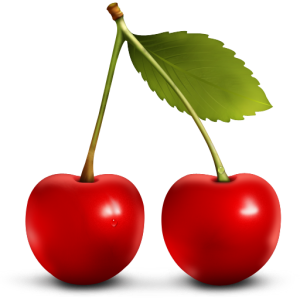








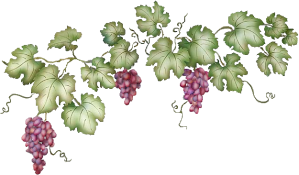

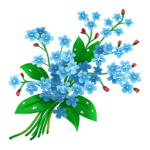

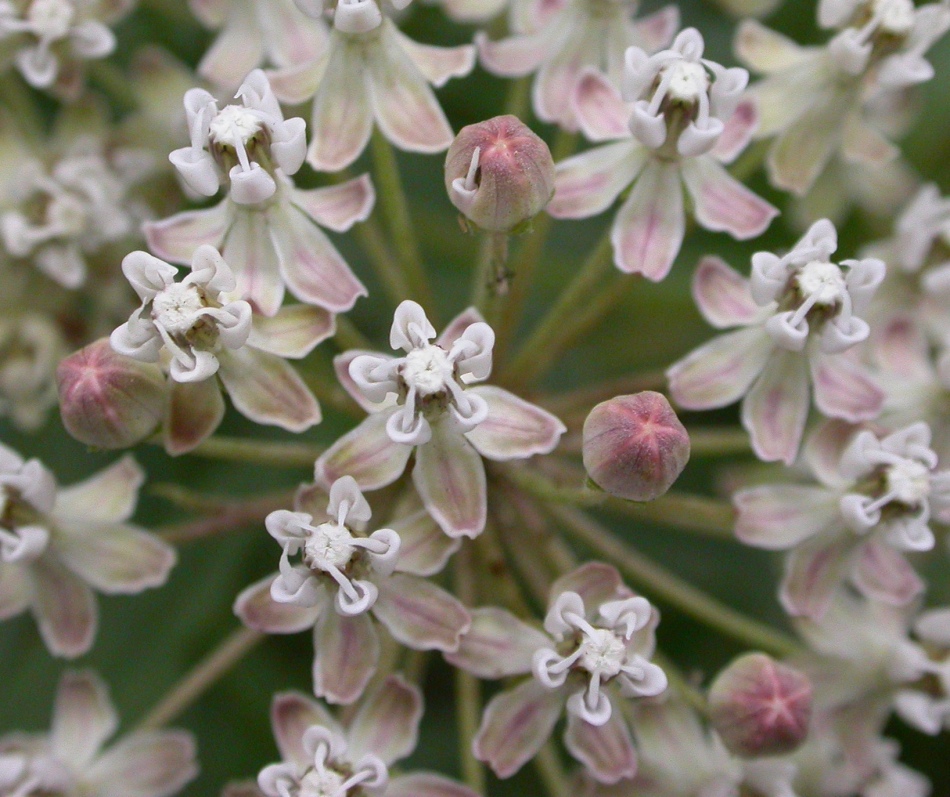


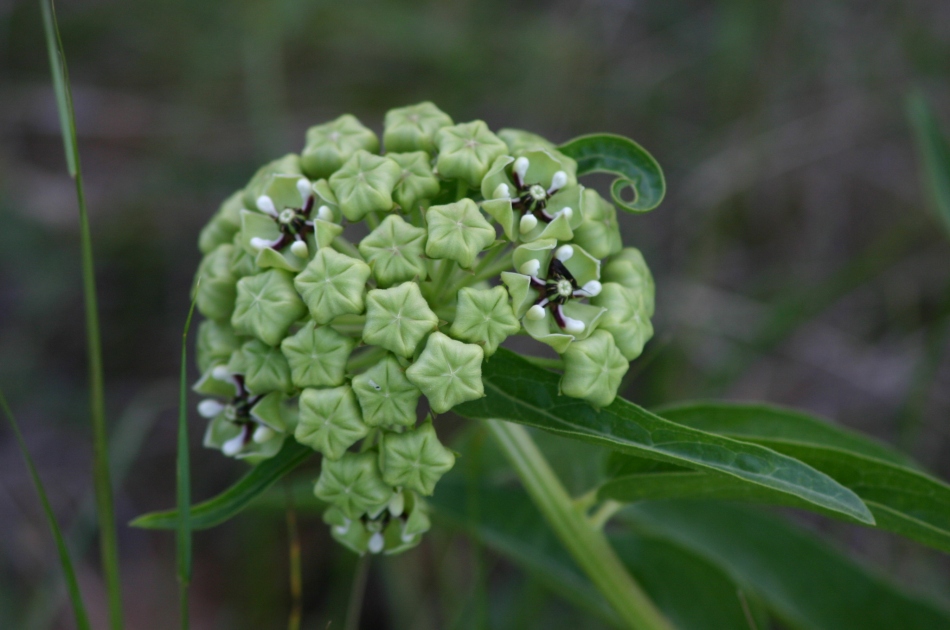
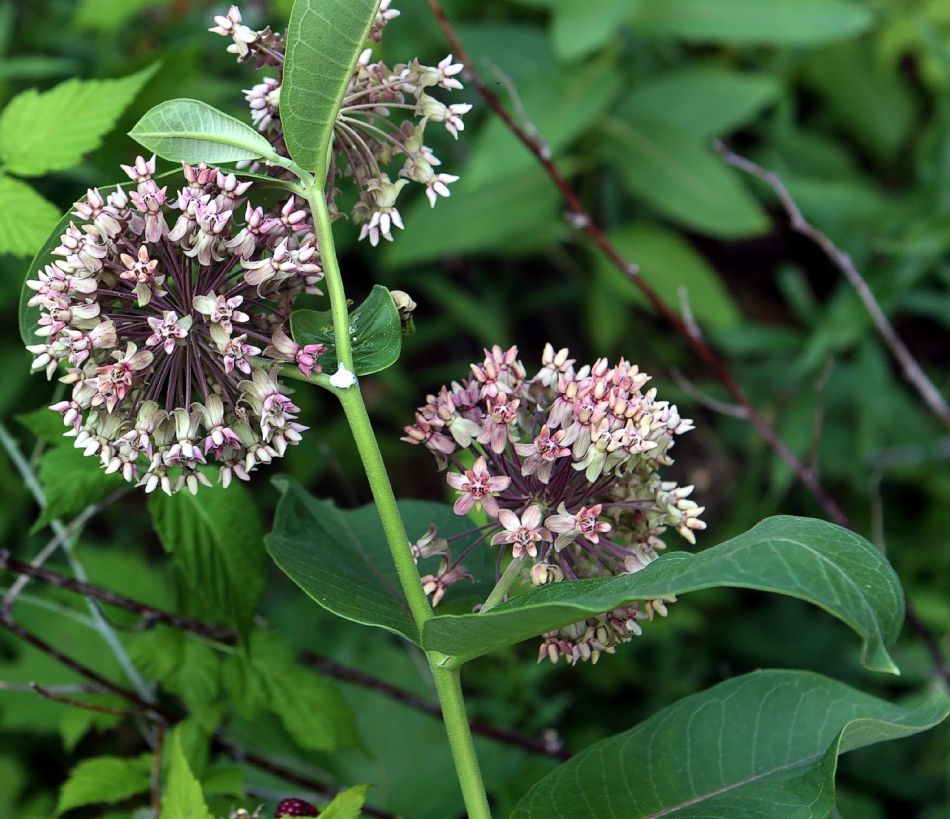
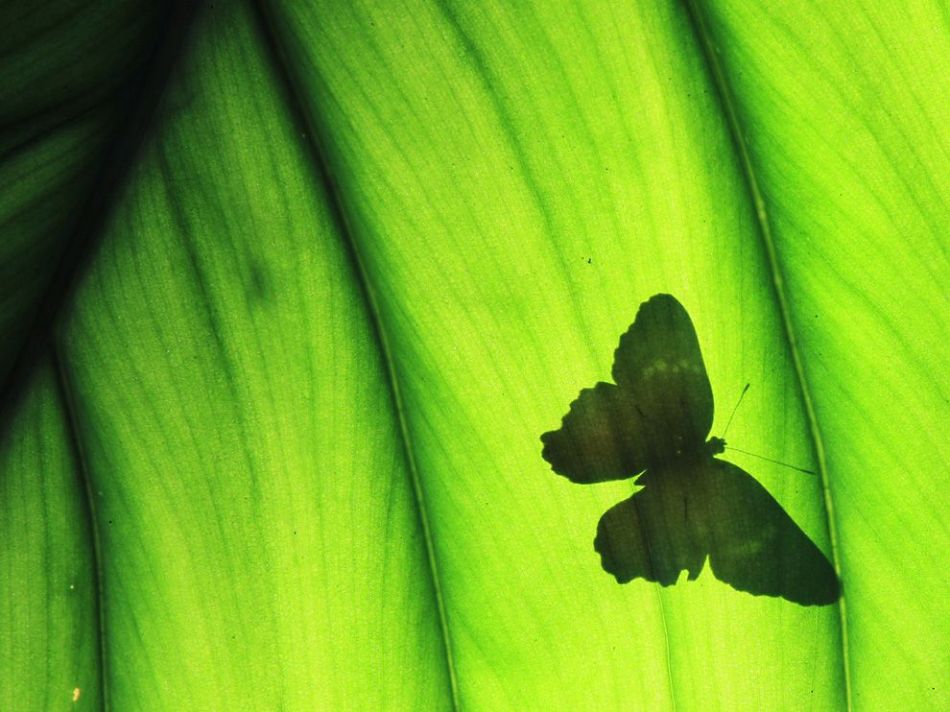
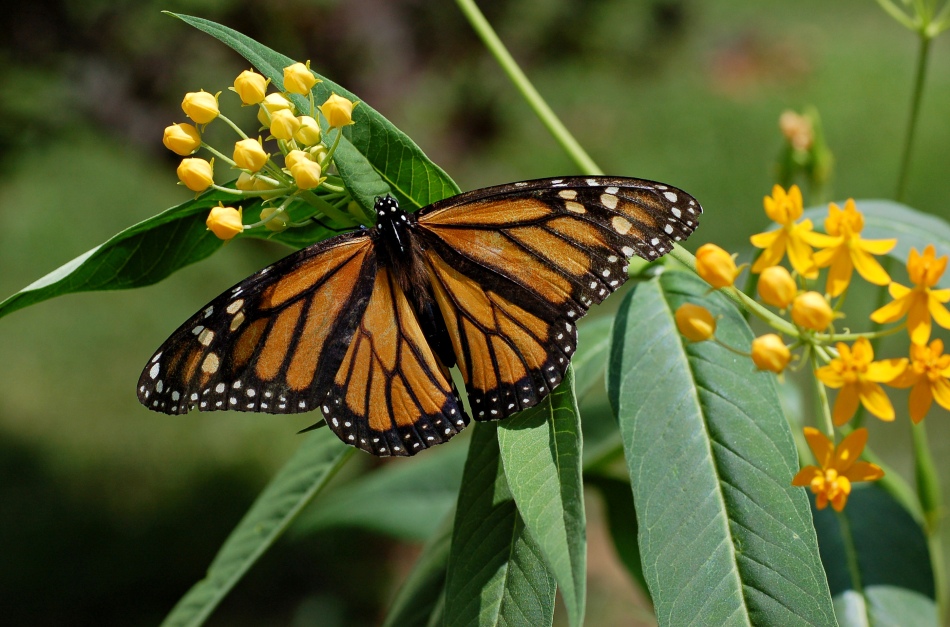
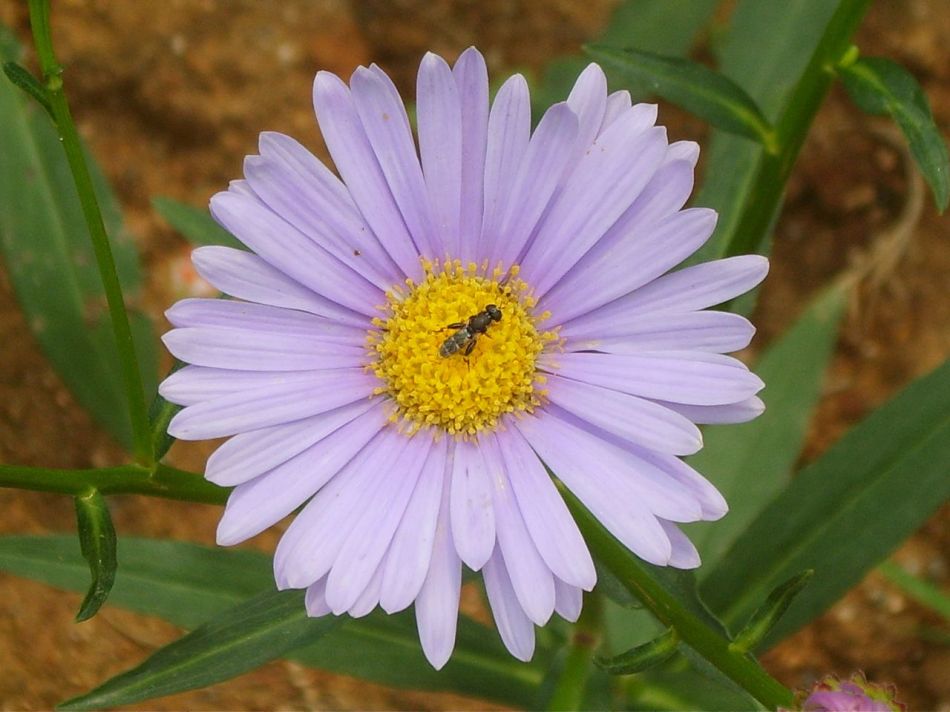

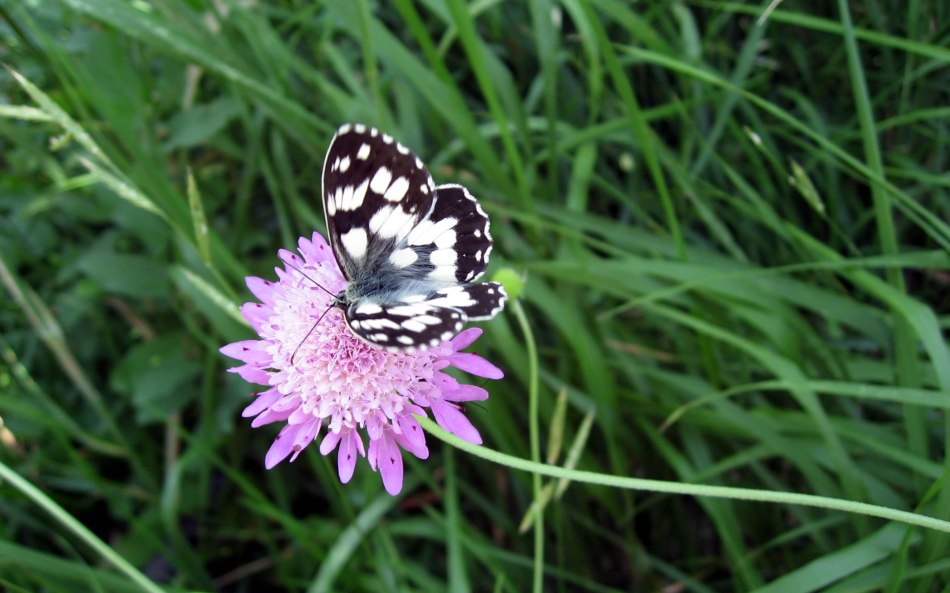
















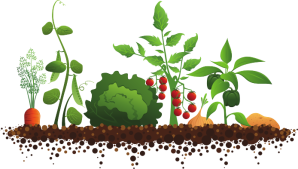


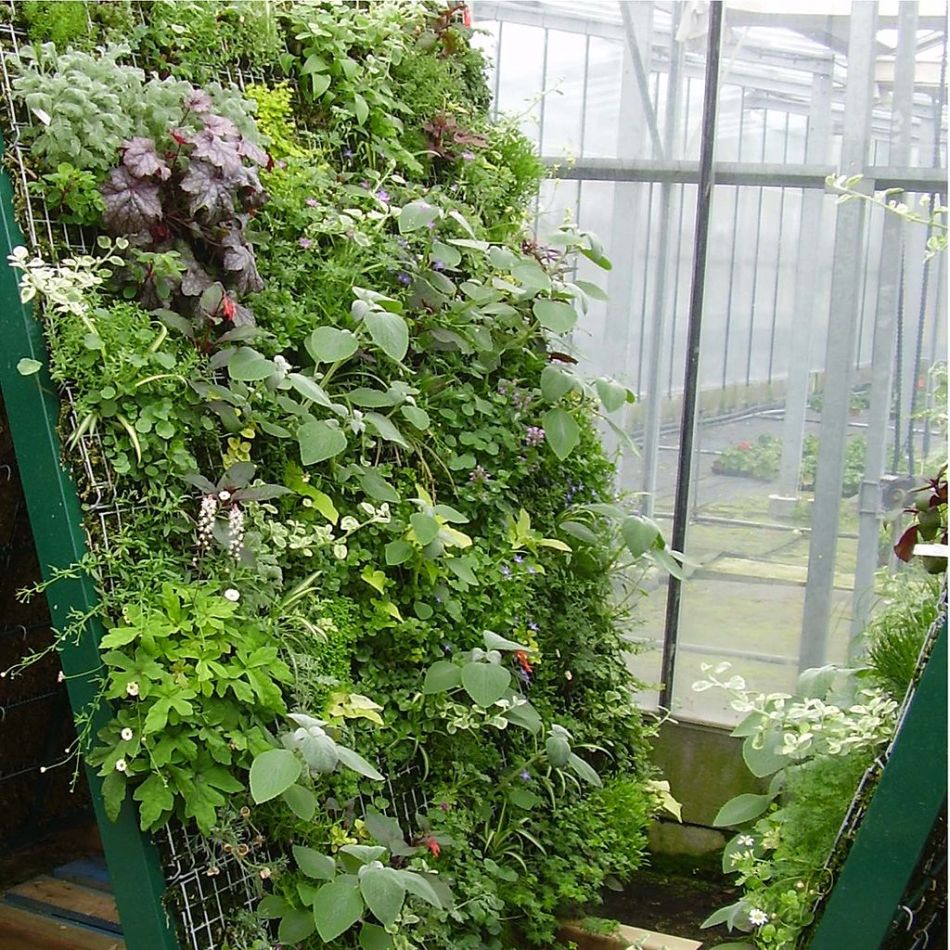



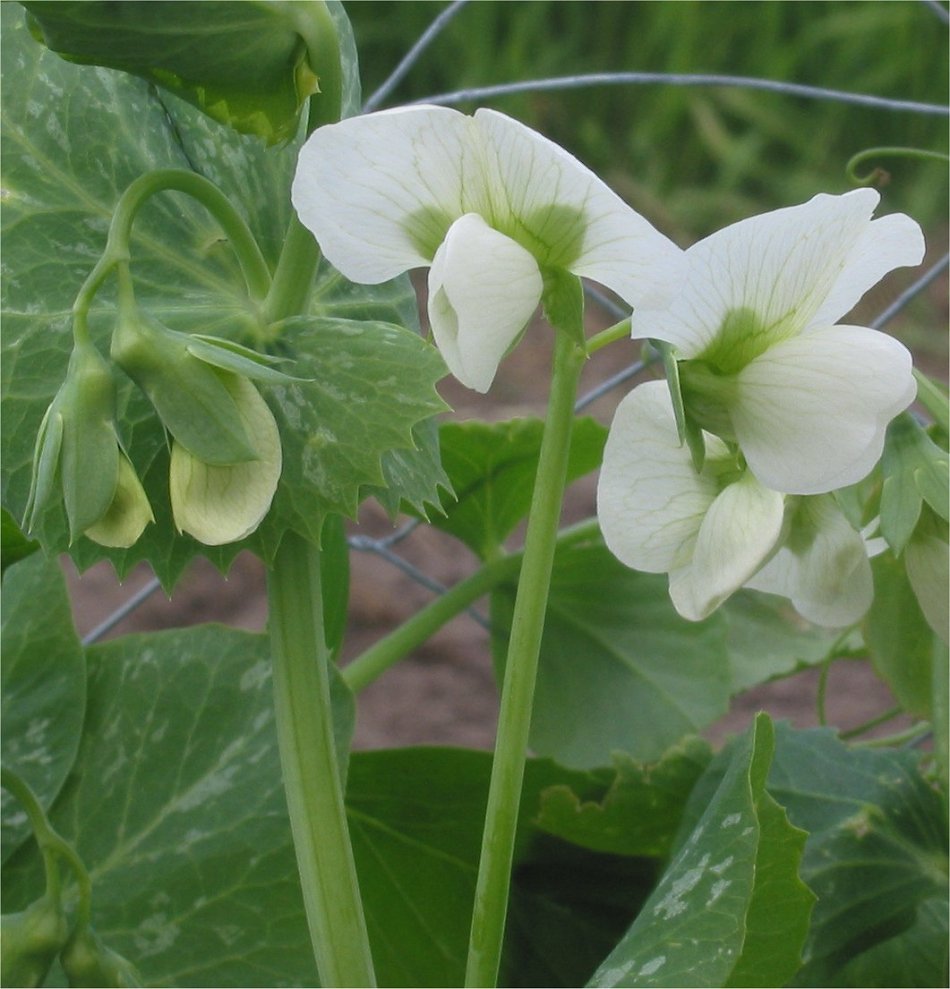

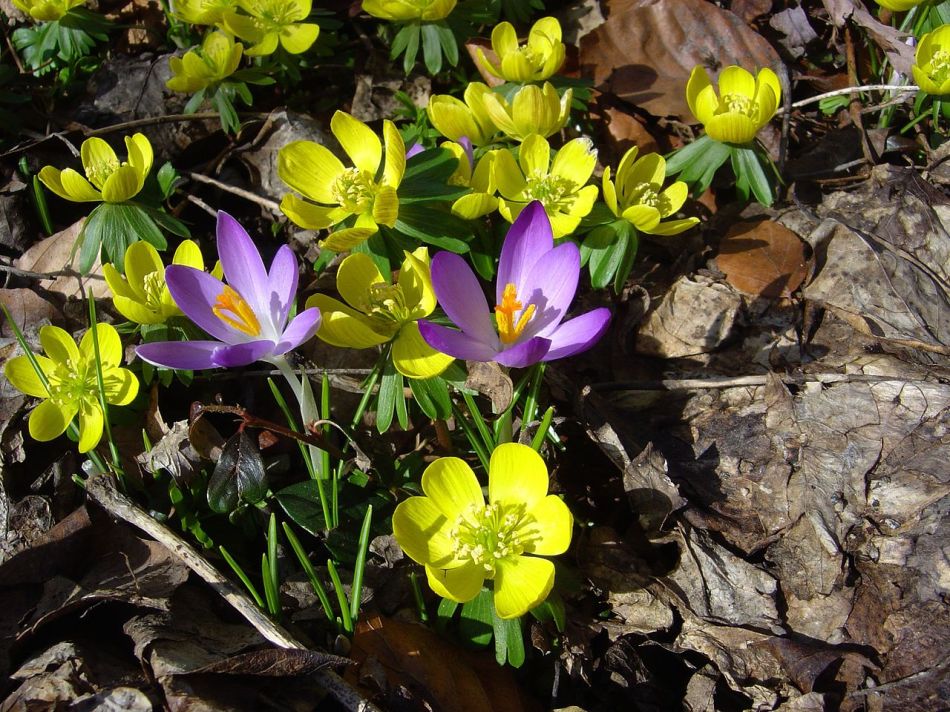




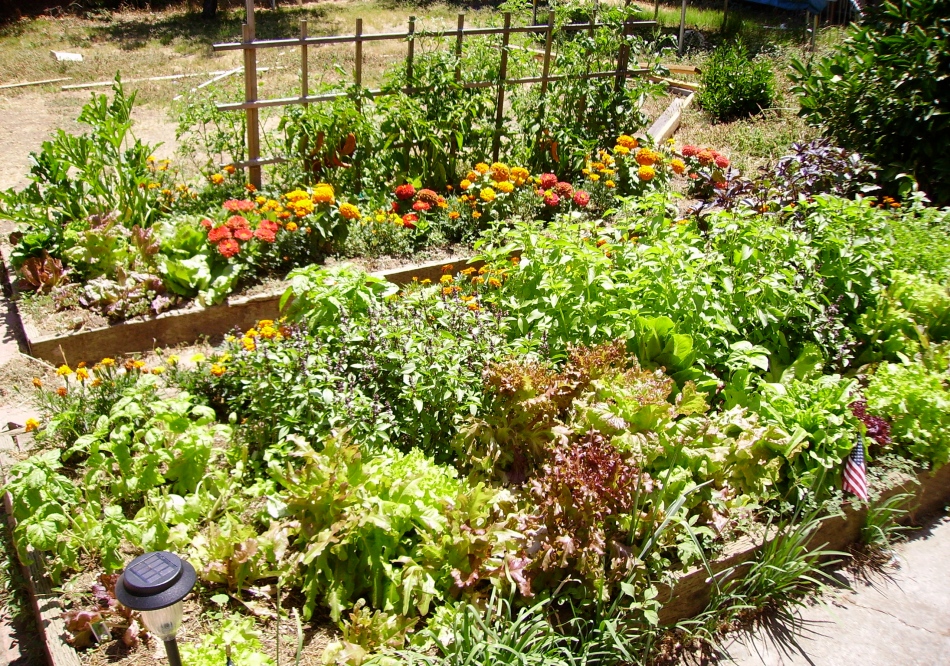

.jpg)
 This 4 x 4-foot bed is crowded with productive peppers, cucumbers, a tomato plant and insect-repelling flowers that are edible.
This 4 x 4-foot bed is crowded with productive peppers, cucumbers, a tomato plant and insect-repelling flowers that are edible.
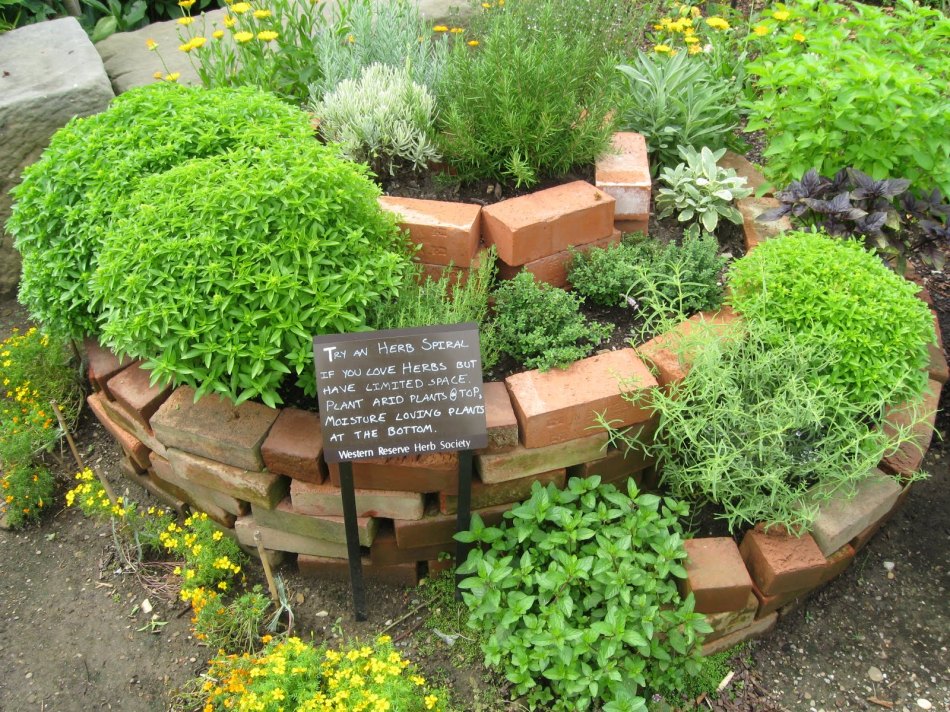
 For space efficiency and high yields, it’s hard to beat a vegetable garden grown in raised beds. Raised beds can improve production as well as save space, time, and money. They also are the perfect solution for dealing with difficult soils such as heavy clay. In addition, raised beds improve your garden’s appearance and accessibility.
For space efficiency and high yields, it’s hard to beat a vegetable garden grown in raised beds. Raised beds can improve production as well as save space, time, and money. They also are the perfect solution for dealing with difficult soils such as heavy clay. In addition, raised beds improve your garden’s appearance and accessibility.



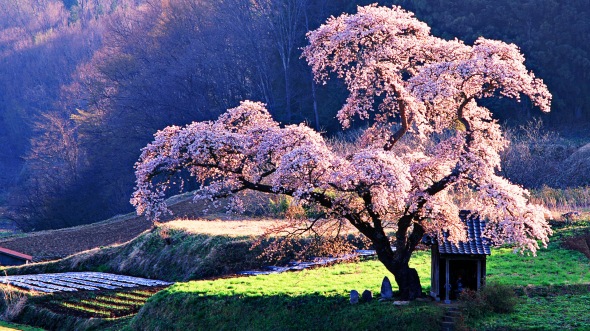




Recent Comments